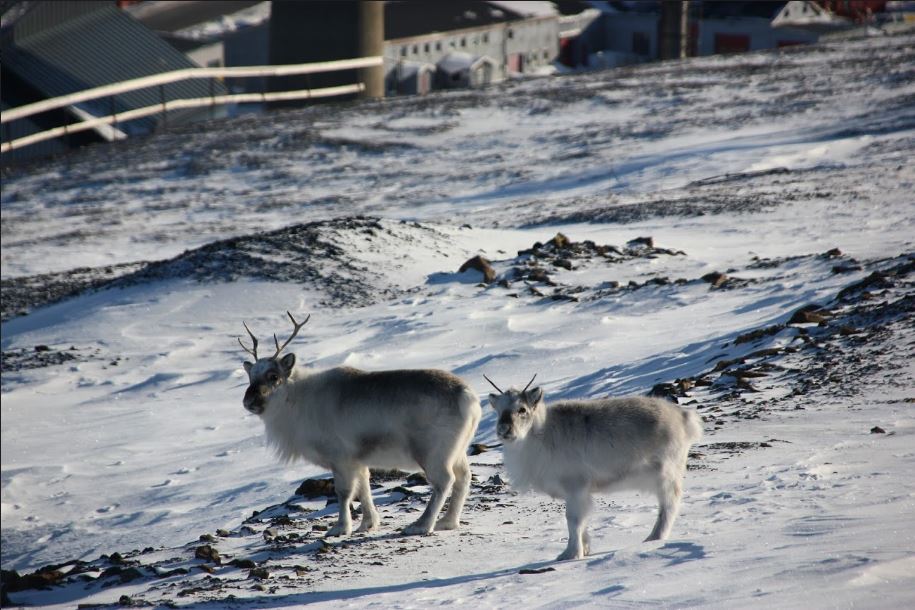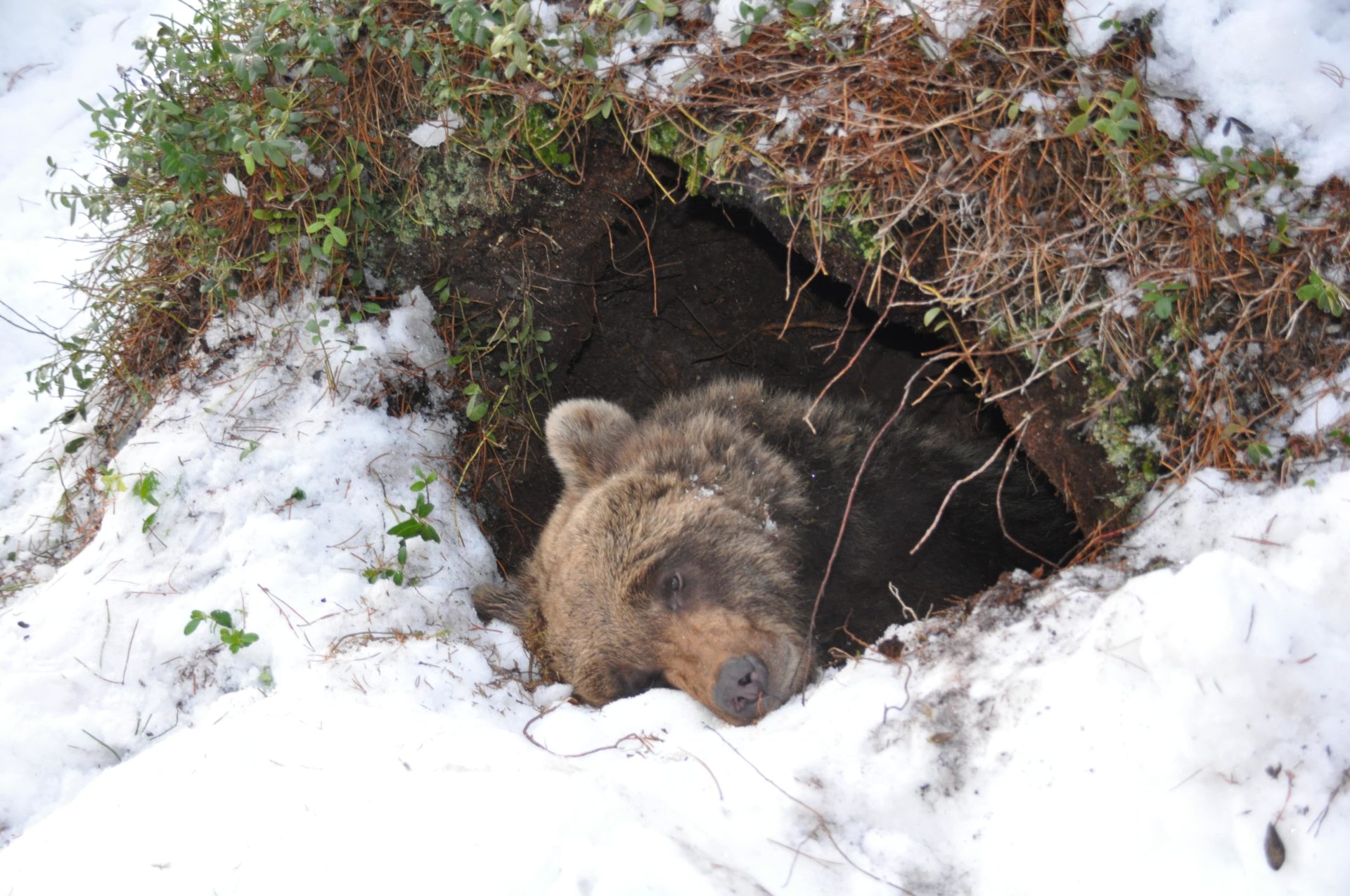
Physiology News Magazine
Ecophysiology and climate change
Shaping our understanding of animal form and function
Features
Ecophysiology and climate change
Shaping our understanding of animal form and function
Features
L Monica Trondrud, Norwegian University of Life Sciences, Norway
Alina L Evans, Inland Norway University of Applied Sciences, Norway
https://doi.org/10.36866/pn.118.26
“Strange animals living in unusual situations have always fascinated humans” (Bennett, 1987). We are naturally drawn towards, and impressed by, animals with functional capacities that exceed our own. How do arctic mammals and birds withstand extreme cold? How can air-breathing animals stay under water for several hours? How can some birds cover thousands of kilometres in air without resting? And how do desert animals survive days, even months, without water?


These questions were first asked by curious biologists such as Laurence Irving (1895 – 1979), Per F Scholander (1905 – 1980) and Knut Schmidt-Nielsen (1915 – 2007), who dared to look beyond the laboratory and out in the wild. From their groundbreaking studies arose the field of ecological physiology, or simply ecophysiology. This field of biology concerns the relevance of the natural environment to an animal’s physiology and evolutionary history, or to paraphrase Schmidt-Nielsen’s aptly titled book, How Animals Work (1972).
All animals are adapted to their own environment with a particular range of ambient temperatures in which they can defend or manage their body temperature. Most animals also display other changes in physiology, morphology and behaviour in response to the natural fluctuations in their environment. The major drivers of these changes are energy availability and utilisation (i.e. energy balance or homeostasis), the need for thermoregulation and water balance.
For example, many arctic mammals adapt to the bitter cold by having thick insulative fur that conserves body heat, by going into torpor or hibernation, the periodic lowering of body temperature and metabolic rate, or by migrating to warmer climates. Desert mammals avoid overheating from the scorching desert sun by having thin fur and large evaporative surfaces, and often are behaviourally adapted by avoiding being active during the midday heat. Some desert animals have extraordinary renal adaptations that even allow them to forego drinking water.
Many ungulates in temperate and arctic zones show remarkable adjustments in heart rate, body temperature and activity levels in response to seasonal changes in ambient temperature and food availability. The Svalbard reindeer (Rangifer tarandus platyrhynchus, Fig. 1), for example, has the most extreme variation in resting heart rate between winter and summer known for any ungulate to date (Arnold et al., 2018). Arctic and temperate rodents are faced with similar constraints but cope by going into hibernation, or torpor, and lowering their body temperature and subsequently their energetic demands. A remarkable example is the Arctic ground squirrel (Urocitellus parryii), which allows its core body temperature to drop below 0°C during torpor bouts lasting for several weeks. During torpor, their metabolic rates drop to 1–2% of basal metabolism, and every 10–21 days they spontaneously rewarm to euthermic levels (36 – 37°C) for about a day before re-entering torpor (Williams et al., 2016), a physiological feat that even other hibernators would only dream of achieving.
Some birds avoid the food-depleted and cold Arctic winters by migrating. Long-distance flight is energetically costly and is also physiologically remarkable. The 100 g Arctic tern (Sterna paradisaea, Fig. 2), for example, travels an astonishing 80,000 km each year to breed in the High Arctic, and overwinter in the Antarctic. Unique adaptations, including specialised lungs, allow birds to fly for such long periods of time (Egevang et al., 2010).

Ecophysiology and technological advances
Since the rise of ecophysiology, advances in technology have continuously opened up a new world of possibilities for physiological studies. It’s been 80 years since Scholander first described the three stages of diving (apnoea, bradycardia and peripheral vasoconstriction) in seals during forced dives in a bathtub, and 64 years since Gerald L Kooyman developed the time–depth recorder that was used to record the depths of voluntary dives by seals (Kooyman, 1966). Many years later, the first heart rate recorder was used during seal dives (Hill et al., 1987), and today, almost any aspect of physiology and behaviour can be studied with bio-logging devices. Indeed, these have been used in a range of taxa including reptiles, birds, fish and mammals. With the advance in technology, the possibilities within ecophysiology have expanded tremendously and bio-logging devices allow us to understand the intricate details in the timing and coordination of physiological events without the stress and physiological, behavioural and ecological alterations associated with keeping animals in captivity during the recordings. This has given us new insights into long-distance migration in birds, diving physiology and thermoregulation in bears during hibernation, to mention a few.
Ecophysiology in the field
The above-mentioned topics are particularly difficult to study without the use of bio-logging devices as they occur in situations that are “beyond” our reach. We will exemplify this by highlighting some key processes occurring before and during hibernation in brown bears (Ursus arctos, Fig. 3) studied by Evans et al., 2016. In that study, in free-ranging bears, they measured body temperature (Tb), heart rate, heart rate variability as a proxy for autonomic nervous system (ANS) levels and locomotor activity over 5 years. They found that brown bears prepare for hibernation by reducing activity levels, heart rates and Tb several weeks before entering the den. Denning appeared to be tightly coupled with metabolic suppression and, unexpectedly, Tb rose 2 months before den exit and was driven by ambient temperature (TA), not by autonomic nervous system activity, which only began increasing 3 weeks before den exit. This indicates that passive rewarming occurred before the SNS began to restore euthermic metabolism in the last 3 weeks. It was not until the ambient temperatures reached the bear’s lower critical temperature that bear exited the den, indicating that perhaps the bear exits when the den becomes “too hot”. Ambient temperatures seem therefore to have a major impact on den exit in brown bears. With rising global temperatures, this dependence may cause shifts in the timing of den exit and potentially lead to mismatches in food availability (Evans et al., 2016). The authors tried to measure den temperature and to use camera traps to document den exit. Unfortunately, the bears turned out to be very sensitive to disturbance and most changed dens after captures.

Working with wild animals often requires an immense amount of equipment, logistics and planning. For example, it takes a minimum of five people, three snowmobiles and one custom-made fish net to catch a Svalbard reindeer: two drive the catching snowmobiles, two people hold the net between the two snowmobiles, and the last person pulls the sled with handling equipment, polar bear protection (rifles), lunch and most importantly, hot blackcurrant juice. Reindeer don’t look like fast runners, but they may surprise you. We often had sore legs and bruises from holding onto the snowmobile like bull riders, as the driver took a U-turn uphill chasing the reindeer. It is not normal, and probably unpleasant, for a reindeer to be chased, captured and handled by humans, so we try to minimise the number of captures, marking and recapture, and optimise monitoring equipment to track individuals throughout the year. Since 2009, we have been using GPS collars and activity recorders to track their movement throughout the year, and some lucky individuals have been equipped with heart rate and temperature recorders ( Fig. 4).
Before the first winter captures of brown bears, we started calling black bear researchers to gain insights from their experiences. Black bears are often captured in the dens, but nobody had dared to try this with brown bears. To minimise our risks we decided to start with smaller bears, who were old enough to not be hibernating with their mothers (who would be much larger and aggressive in the protection of their young). To our surprise, unlike the black bears, some of the brown bears heard us coming and were wide awake! This, along with the extreme cold, presented significant challenges, especially when you found your ultrasound batteries dead, or worse when you found one of those bears awake and your tranquiliser solutions were frozen in the darts!

Similar to the Svalbard reindeer studies, we were dependent on snowmobiles to carry the people and the gear. We have four local forest rangers who volunteer with their snowmobiles to transport people and gear, and who also participate in the captures. After each bear capture, one snowmobile machine rushes the first samples back to the cars, and then we have a rally driver who is also a biomedical technician who races the samples back to the fieldstation and begins preparing them at room temperature. After the captures are completed, there is a mountain of logistical work to ship samples on dry ice across Europe but now, some years later, nearly 30 European researchers are able to study samples from these hibernating bears.
Consequences of climate change and physiological constraints
One of the consequences of climate change is the increasing frequency of extreme weather events such as heat waves, drought, floods, hurricanes, and winter warm spells in the Arctic (IPCC, 2013). In addition to immediate mortality from heat stress, dehydration or drowning during extreme weather events, habitat loss and reduced food availability may have consequences for reproduction and growth in the future. In the Arctic, winter warm spells and “rain-on-snow” events are occurring more frequently now than before, resulting in thick layers of ground ice, which “locks” in food and makes it inaccessible to herbivores. While most Arctic mammals build up internal fat stores that serve as a buffer against starvation in winter, these stores are not sufficient for non-hibernators to survive throughout the winter without foraging (Blix, 2016). Severe “rain-on-snow” events have in some instances led to population crashes in Arctic birds, rodents, and ungulates. Contrastingly, warmer summers may facilitate increased fat storage in the autumn, increasing the chance of survival over winter (Albon et al., 2017). Studying the energetics of animals in these changing environments can help us understand the impacts of climate change on their coping capacities. This may be particularly important for species in vulnerable areas such as the Arctic.
Global warming is leading to the gradual increase in the Earth’s surface temperature. For arid-zone birds, direct effects of increasing temperatures can range from extreme heat waves causing lethal hyperthermia or dehydration, to chronic exposures to sublethal temperatures over several weeks. For birds inhabiting southern Africa’s Kalahari Desert, one study predicted that the risk of chronic exposure to sustained hot weather (sublethal temperatures) can lead to progressive loss of body condition, delayed fledgling and breeding failure (Conradie et al., 2019). When temperatures reach a certain threshold, the birds fail to thermoregulate while foraging at the same time. The foraging trade-off results in diurnal mass loss instead of mass gain, which over time leads to overall reduced fitness. By the end of this century, the authors predict that much of the Kalahari’s avian biodiversity will be lost.

Concluding remarks
Ecophysiology is an essential part of understanding how animal form and function shape the behaviour and population dynamics of animals. For long-lived species, evolutionary adaptations do not occur at the same rate as their climate changes. As climate change progresses, the need to understand animal responses and adaptations to change is essential. Ecophysiology is facilitating the research on animals’ capacity to respond to change and the mechanisms behind these responses.
We conclude this piece by promoting our virtual online conference Future Physiology 2020 titled “Physiology in a changing climate: the interdependence between physiology, behaviour and the environment.” During this conference, we will explore how we can incorporate thermal and metabolic physiology into forecasts of future populations of both humans and animals. Visit our website to register: physoc.org/events/future-physiology-2020/
References
Albon SD et al. (2017). Contrasting effects of summer and winter warming on body mass explain population dynamics in a food-limited Arctic herbivore. Global Change Biology 23(4), 1374 – 1389. DOI: 10.1111/gcb.13435
Arnold W et al. (2018). Circadian rhythmicity persists through the Polar night and midnight sun in Svalbard reindeer. Scientific Reports 8(1), 14466. DOI: 10.1038/s41598-018-32778-4
Bennett AF et al. (eds) (1987). New directions in ecological physiology. Cambridge University Press.
Blix AS (2016). Adaptations to polar life in mammals and birds. Journal of Experimental Biology 219(8), 1093 – 1105. DOI: 10.1242/JEB.120477
Conradie SR et al. (2019). Chronic, sublethal effects of high temperatures will cause severe declines in southern African arid-zone birds during the 21st century. Proceedings of the National Academy of Sciences. 116(28), 14065 – 14070. DOI: 10.1073/pnas.1821312116
Egevang C et al. (2010). Tracking of Arctic terns Sterna paradisaea reveals longest animal migration. Proceedings of the National Academy of Sciences 107(5), 2078 – 2081. DOI: 10.1073/pnas.0909493107
Evans AL et al. (2016). Drivers of hibernation in the brown bear. Frontiers in Zoology 13(1), 7. DOI: 10.1186/s12983-016-0140-6
Hill RD et al. (1987). Heart rate and body temperature during free diving of Weddell seals. American Journal of Physiology – Regulatory Integrative and Comparative Physiology 253(2), R344 – 351.DOI: 10.1152/ajpregu.1987.253.2.r344
IPCC (2013). Climate Change 2013: The Physical Science Basis. Contribution of Working Group I to the Fifth Assessment Report of the Intergovernmental Panel on Climate Change. Edited by Stocker TF et al. Cambridge, UK and New York, NY, USA: Cambridge University Press.
Kooyman GL (1966). Maximum diving capacities of the Weddell seal, Leptonychotes weddeili. Science, 151(3717), 1553 – 1554. DOI: 10.1126/science.151.3717.1553
Schmidt-Nielsen, K (1972). How Animals Work. Cambridge University Press.
Williams CT et al. (2016). Integrating physiology, behavior, and energetics: Biologging in a free-living arctic hibernator. Comparative Biochemistry and Physiology Part A: Molecular & Integrative Physiology 202, 53 – 62. DOI: 10.1016/J.CBPA.2016.04.020
